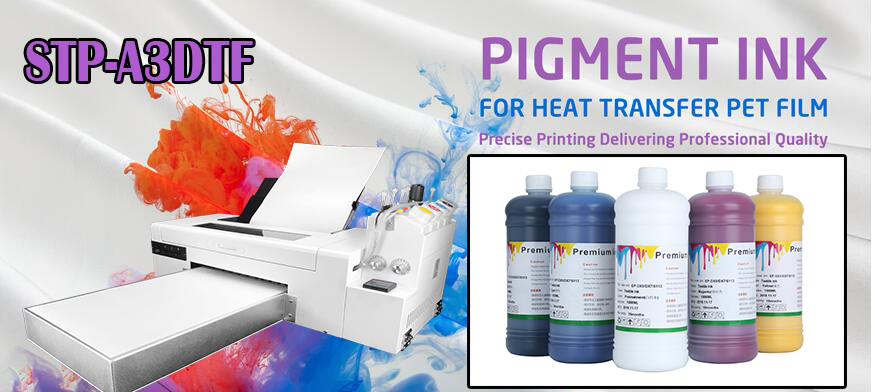Knowleages
The requirements for DTF printing do not demand a heavy investment from the user.
Be it someone who is currently engaged in one of the digital textile printing process mentioned above and wants to shift to DTF printing as an extension of the business, or someone wanting to venture into digital textile printing starting with DTF, one has to invest in the following:

Direct to Film Printer
– These printers are often called DTF Modified Printers. These printers are mostly the basic 6 color ink tank printers like Epson L800, L805, L1800 etc. The reason this series of printers is chosen is that these printers work with 6 colors. This provides convenience of operation as the CMYK DTF inks can go into the standard CMYK tanks whereas the LC and LM tanks of the printer can be filled with White DTF inks. Also the rollers used to slide the page are removed to prevent the appearance of ‘linings’ on the white layer printed on the DTF film.
Films
– PET films are used in DTF printing process. These films are different than those used in screen printing. These have a thickness of around 0.75mm and better transfer characteristics. In the language of the market, these are often referred to as DTF Transfer Films. DTF films are available in the form of Cut Sheets (can be used for a small scale use) and Rolls (used with a commercial setup). Another classification of the PET films is based on the type of peeling that is done after the transfer. Based on the temperature, the films are either hot peel type films or cold peel type films
Software
– The software is an important part of the process. The print characteristics, color performance of the inks and the final print performance on the fabric after transfer are greatly influenced by the Software. For DTF, one would require a specialized RIP software that can handle CMYK and White Colors. The color profiling, ink levels, drop sizes and other factors contributing to an optimized print result are all governed by the DTF Printing software.
Hot-melt adhesive Powder
– The DTF printing powder is white in color and acts as an adhesive material that binds the colored pigments in the print to the fibres in the fabric. There are different grades of the DTF hot melt powder that are specified in microns. An appropriate grade should be selected based on requirements.
DTF Printing Inks
– These are specially designed pigment inks available in Cyan, Magenta, Yellow, Black and White colors. The White Ink is a special component lays out the white foundation of the print on the film and onto which the colored design is printed.
Automatic Powder Shaker
– The Automatic Powder Shaker is used in commercial DTF setups to apply the powder evenly and also to remove the excess powder.
Curing Oven
– The curing oven is basically a small industrial oven that is used to melt the hot melt powder that is applied over the transfer film. Alternatively, a heat press machine can also be used to carry this out but it should be used in no contact mode.
Heat Press Machine
– The heat press machine is used mainly for transferring the image printed on the film on to the fabric. It can also be used to heat the hot melt powder on the DTF film.
